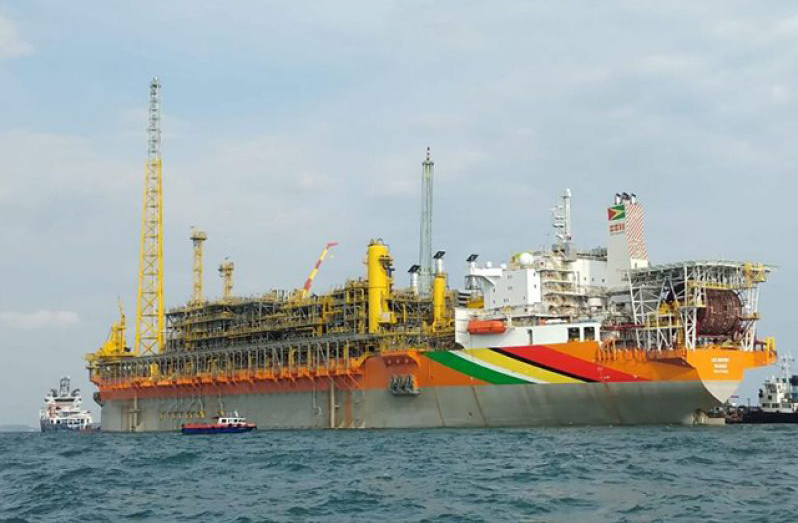–two phases completed already says ExxonMobil
THE repaired and upgraded components of the flash gas compression system, aboard ExxonMobil’s Liza Destiny Floating Production Storage and Offloading (FPSO) vessel, have been safely re-installed, but a comprehensive three-phase testing programme is being undertaken to ensure full safety.
The compressor was damaged in January and resulted in the company having to temporarily increase gas-flaring above pilot levels in order to maintain safe operations. The faulty contraption was subsequently removed and sent to Germany for immediate repairs.
According to updated information from ExxonMobil, a technical team has successfully completed the first two phases, which were intended to verify the effectiveness of the modifications to the equipment and control system logic. Pilot level flare was attained during the testing and a significant volume of process and mechanical data collected.
The final stage of testing will take place this week, after the removal of temporary instrumentation. The third phase involves monitoring the performance of the machine closely in normal, steady-state operation.
It was reported that an order has been placed for a new flash gas compressor, which will be available closer to the end of this year, given the complex nature of the equipment.
The company has since reduced production levels at its operations offshore Guyana in order to accommodate the repair of the defective gas compressor.
It was noted that the company continues to produce oil at 120,000 barrels per day, while the current daily levels of flaring are between 16 and 18 million cubic feet.
Back in 2019, ExxonMobil had explained to the media that for the first period, after ‘first oil’, there would be initial start-up flaring, as authorised by the Environmental Protection Agency (EPA), which occurs during the commissioning and initial start-up phases of the FPSO when gas and liquids are introduced into new facilities and equipment.
This flaring, it said, would not continue as a routine, and will only take place again in the case of an emergency, whereby flaring will be used to immediately de-pressurise the facility as part of a shut-down process to reduce risk.
Executive Director of the Payne Institute for Earth Resources and Research, Professor of Public Policy at the Colorado School of Mines, Dr. Morgan Bazilian, had said that general regulatory and technical measures must be implemented to mitigate gas-flaring in future projects.
“Yes, flaring itself has environmental impacts, and is a waste of resources, economically and environmentally bad,” said Dr. Bazilian during a virtual session with local reporters in October 2020. He further added that there are technical ways to reduce flaring, but there must be a combination of technical measures which will come in quickly, and regulatory measures. Most countries take “a long time” to develop a regulatory framework for gas-flaring, but from the expert’s understanding, the projects in Guyana are engineered to have zero routine flaring.
Dr. Bazilian pointed to the “Zero Routine Flaring by 2030” initiative introduced by the World Bank, which brings together governments, oil companies, and development institutions which recognise the dangers of flaring. According to the World Bank, this initiative pertains to ‘routine flaring’, and not to ‘flaring’ for safety reasons or non-routine flaring, which, nevertheless, should be minimised. ExxonMobil has since said that it remains committed and focused on the quality of the work to ensure successful re-start of the flash gas compression system, which will lessen flaring, once fully operational.



.jpg)









